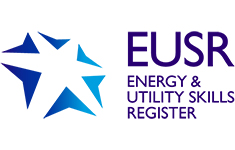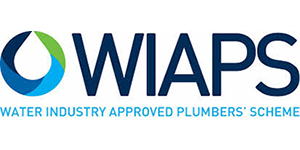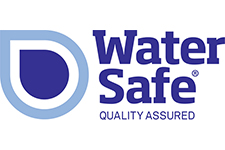For centuries, lead has been a ubiquitous material, shaping everything from Roman plumbing to Renaissance paints. However, its toxicity, once a mystery, is now a well-established fact. This raises a crucial question: are lead pipes still lurking beneath our streets and within our homes in the UK?
The answer is a complex one, interwoven with history, public health concerns, and ongoing efforts to mitigate risk. Let’s delve into the past and present of lead pipes in the UK, exploring the dangers they pose and the reasons for their historical prevalence.
A Long and Leaky History: Lead’s Reign in Plumbing
Lead’s journey in plumbing stretches back millennia. Its malleability, resistance to corrosion, and ease of working with made it an ideal choice for early civilizations. The Romans, known for their advanced engineering feats, extensively used lead pipes in their aqueducts and water distribution systems. This practice continued for centuries across Europe, finding its way to Britain as well.
The Industrial Revolution in the 18th and 19th centuries saw a surge in the use of lead pipes due to several factors:
- Industrial Production: With advancements in lead smelting, large quantities of the metal became readily available.
- Urbanisation: Rapid growth of cities created a demand for efficient water distribution systems, and lead pipes offered a readily available solution.
- Lack of Awareness: The detrimental health effects of lead were not yet fully understood at the time.
Lead pipes remained the dominant choice for domestic water supplies throughout the Victorian era and well into the 20th century. However, the tide began to turn as scientific understanding of lead poisoning evolved.
The Dark Side of Lead: Unveiling the Dangers
The detrimental effects of lead on human health became increasingly evident in the early 20th century. Symptoms like abdominal pain, headaches, and learning difficulties in children were linked to lead exposure. Further research solidified the connection between lead and a myriad of health problems, including:
- Neurological Damage: Lead exposure can impair cognitive development, memory, and attention span in children.
- Kidney Damage: Lead can damage the kidneys, leading to potential long-term health issues.
- Cardiovascular Issues: Studies suggest a link between lead exposure and an increased risk of heart disease later in life.
- Developmental Delays: In pregnant women, lead exposure can pose a significant risk to the developing foetus.
These discoveries prompted a reassessment of the safety of lead pipes.
The Decline of Lead: A Shift Towards Safer Materials
The harmful effects of lead on public health led to a gradual shift away from lead pipes in the UK. Here are some key milestones:
- 1970: The use of lead pipes in new plumbing installations was banned in the UK.
- 1985: Lead content restrictions were introduced for solders used in plumbing.
- 2014: The UK government launched a voluntary program to encourage homeowners to replace lead pipes.
While the use of lead in new plumbing systems has been outlawed for decades, the legacy of lead pipes remains. Many older homes, particularly those built before the 1970s, may still have lead pipes supplying their water.
Are Lead Pipes Still a Threat? The Lingering Legacy
The presence of lead pipes in older properties poses a potential health risk, especially for young children and pregnant women who are more susceptible to lead poisoning. Here’s a closer look at the current situation:
- Prevalence: Estimates suggest that a significant portion of homes in the UK, particularly in areas with a high concentration of pre-1970s properties, could still have lead pipes.
- Testing: If you suspect your home may have lead pipes, it’s crucial to get your water tested for lead content. Several water companies offer testing kits or programs.
- Replacement: If lead is detected in your water, replacing the lead pipes with a safer alternative like copper or PEX is essential. Government initiatives and water companies sometimes offer financial assistance for lead pipe replacement.
Mitigating the Risk: Steps You Can Take
Even if you haven’t confirmed the presence of lead pipes, some precautionary measures can help minimise potential risks:
- Flushing: Run the cold tap for a few minutes before using the water for drinking or cooking, especially if the water hasn’t been used for a while. This helps clear any stagnant water that might have higher lead concentrations.
- Cold Water Consumption: Primarily use cold water for drinking and cooking, as hot water can leach more lead from pipes.
- Lead Testing: Consider getting your water tested for lead, especially if you have concerns or live in an older property.
- Professional Help: If you suspect lead pipes in your home, consult a qualified plumber for proper identification and replacement. They can assess your specific situation and recommend the most suitable course of action.
Moving Forward: A Lead-Free Future
The UK government and water companies are committed to reducing lead exposure from drinking water. Here are some ongoing efforts:
- Lead Pipe Replacement Programs: Several water companies offer financial assistance or lead replacement schemes to encourage homeowners to remove lead pipes from their properties.
- Public Awareness Campaigns: Initiatives aim to educate the public about the dangers of lead and encourage testing for lead in water.
- Research and Innovation: Ongoing research explores alternative materials and techniques for water distribution systems to ensure long-term safety.
The complete eradication of lead pipes from the UK’s water infrastructure will likely be a long-term process. However, ongoing efforts and public awareness are crucial steps towards a future where lead poisoning is no longer a concern.
Conclusion: A Legacy We Must Address
Lead pipes, once a ubiquitous symbol of progress, now represent a public health challenge. While their use has been banned for new installations, the legacy of lead pipes persists in older properties. Understanding the dangers of lead and taking proactive measures to mitigate risks is essential to safeguard public health. Through continued efforts from government, water companies, and individuals, the UK can move closer to a lead-free future where clean water flows freely without worry.








